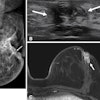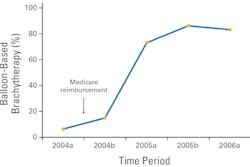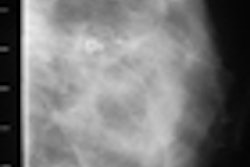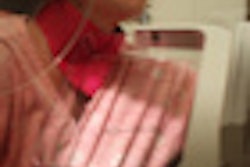Interval mammograms performed six months after breast-conserving therapy (BCT) are unnecessary, according to a study presented Friday at the Cancer Imaging and Radiation Therapy Symposium in Atlanta. Instead, annual mammography is sufficient for following these patients.
"We've known for more than 30 years that radiation can be combined with surgery or chemotherapy to conserve the breast in women with breast cancer," said briefing host Dr. Anthony Zietman of Massachusetts General Hospital.
"It's been very successful in hundreds of thousands of women globally," he said. "But when women keep their breasts, it's important to [track them and] make sure there's no cancer recurrence or new cancer. Mammography has been the standard mode of follow-up -- but how often should mammograms be taken after breast-conserving therapy?"
Lead study author Dr. Scott Herbert at Drexel University and colleagues sought to answer this question by exploring the clinical relevance and utility of an interval mammogram after BCT. Herbert also spoke at the press briefing.
Annual mammograms are frequently conducted after breast-conserving therapy, he said, but some radiologists recommend an interval mammogram at six months after the first post-treatment mammogram (which is, on average, five months after radiation treatment has been completed).
"There's no clear-cut consensus on how frequently to do mammography after breast-conserving therapy," Herbert said. "At our institution, we perform a mammogram one year after diagnosis and then yearly after that. But some clinicians order interval mammograms to be done six months after the first follow-up mammogram."
The study included 467 patients from Abington Memorial Hospital in Pennsylvania, who had breast-conserving therapy between 2007 and 2010. Out of the 467 BCT patients, 87 received an interval mammogram, and of these, only four were further biopsied, Herbert said. The biopsies yielded no recurring or new breast cancers.
"Of these 87 women, 27 had suspicious findings at interval mammogram and received further interventions such as ultrasound or MRI," Herbert said. "But there were ultimately no malignancies, and each of these women returned to yearly follow-up mammography protocol."
Cutting the interval mammogram out entirely would lower healthcare costs without negatively affecting patients, Herbert concluded.
"Based on our study results, the interval mammogram is not necessary and, in fact, is associated with increased healthcare costs, increased patient anxiety and pain, and increased radiation dose," he said. "Our recommendation is that annual diagnostic mammography is sufficient to track women after breast-conserving therapy."




















